Do you want to install WordPress on your Windows computer locally? Working with WordPress on your computer allows you to test new WordPress features, learn how to develop with WordPress, and make websites before migrating them to the live server. In this article, we will show you how to properly install WordPress on Windows using WAMP.
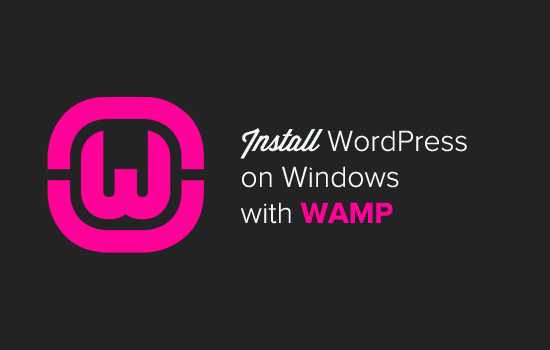
Why You Should Install WordPress on Windows?
Installing WordPress locally on your computer gives you a testing environment that doesn’t affect your live website or blog. A WordPress install on your computer is also referred to as local server or localhost.
Normally WordPress developers use local WordPress install to develop their plugins and themes. Beginner users can also install WordPress on their computers to learn WordPress, test new WordPress theme and plugins, and experiment without affecting a live website.
Note: If you install WordPress locally on Windows, then the only person who can see that site is you. If you want to make a website that is available to the public, then you need to have a domain name and web hosting. We recommend that you follow this guide on how to start a WordPress blog.
That being said, let’s take a look at how to properly install WordPress on Windows using WAMP.
What is WAMP?
WAMP, is a compilation of Apache web server, PHP and MySQL bundled for Windows computers.
All of them are separate open source software. However, installing them separately is not quite easy even for experienced users. Software like WAMP allow you to easily install them and have a working local environment within minutes.
Step 1. Installing WAMP on Windows Computer
First, you need to download the WAMP software and install it on your computer. Simply go to the WampServer website and click on the ‘Start Using WampServer’ button.
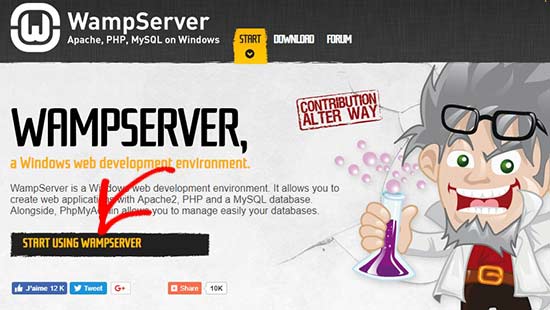
It will take you to the downloads section. You’ll see two versions here: WampServer 32 bits and WampServer 64 bits. You need to select the WampServer version that matches the operating system type of your Windows computer.
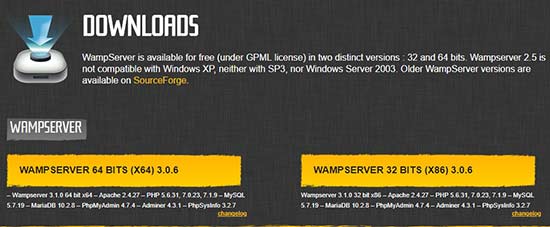
To find out whether you are using 32 or 64-bit operating system, go to Control Panel » System and Security » System in your computer. There you will be able to see your operating system type.
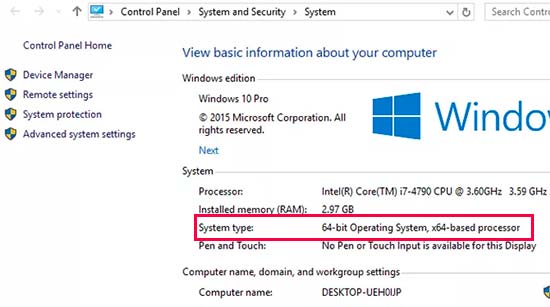
Once downloaded, you can click on the wampserver execution file to run the installation. Make sure that you carefully follow the instructions on the installation screen.
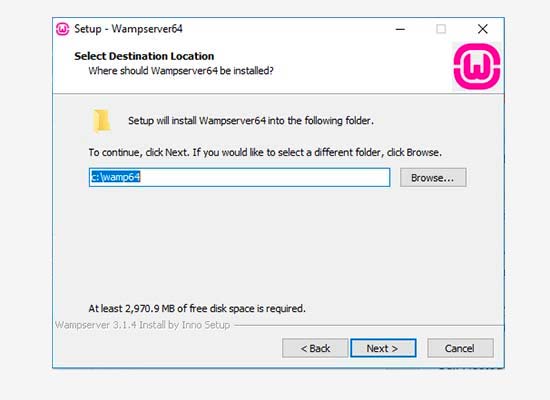
During the installation process, you need to define the location for the web browser. By default, it will be Internet Explorer. You can change that to Google Chrome or any other web browser by locating it in the Program Files of your computer.
Once installed, you can launch the WampServer to continue.
Step 2. Setting Up a Database for Local WordPress Setup
Next thing you need to do is to create a blank MySQL database. On launching WAMP, you’ll see a green WampServer icon at the bottom right corner of your screen along with other icons. Simply click on it and then click on phpMyAdmin (a web based application to manage MySQL databases).
Note: If the WampServer icon is red or yellow, then it means the services (Apache, MySQL, PHP) are not running. You need to start the services by clicking on the icon before setting up the database.
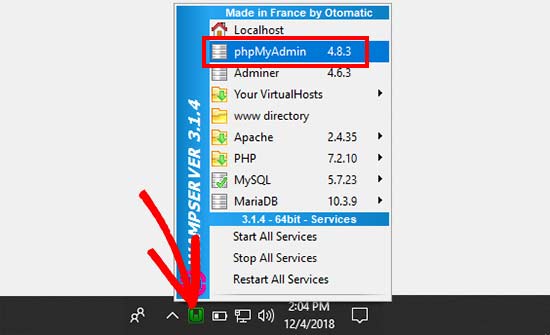
It will take you to the phpMyAdmin login screen on your web browser. Simply enter the username: root and leave the password field blank. These are the default credentials to login into your localhost phpMyAdmin.
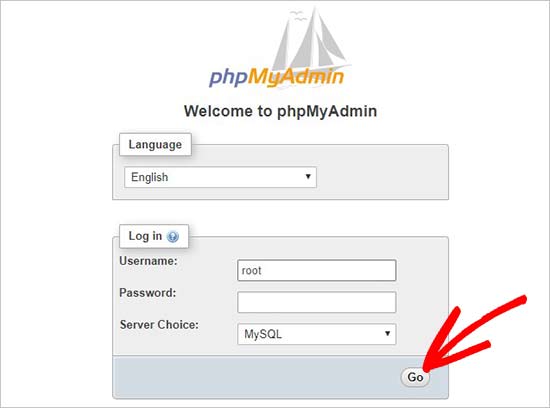
Click on the ‘Go’ button to continue.
Once logged in, you need to click on Databases in phpmMyAdmin to create a new database for WordPress. It will ask you to choose a name for your new database (we named ours test_db). After that click on the ‘Create’ button.
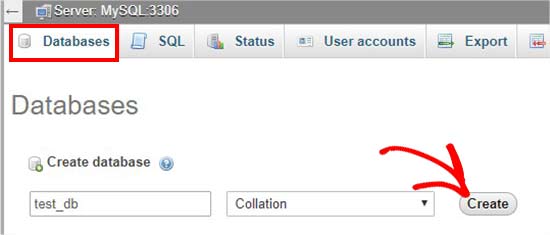
Your database is ready which means you can now install WordPress on localhost.
Step 3. Installing WordPress on Windows Using WAMP
The next thing you need to do is download the latest version of WordPress from the WordPress.org website. It will download as a zip file.
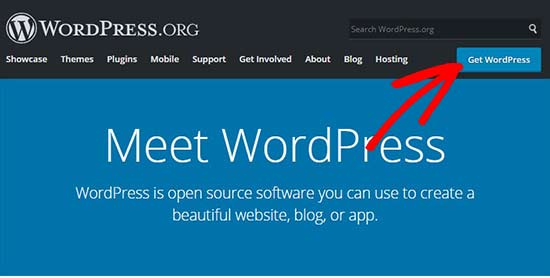
You need to extract the zip file and copy the ‘wordpress’ folder.
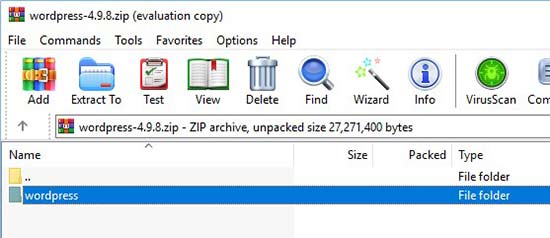
Now you need to navigate to the folder where you installed WAMP.
In this tutorial, we installed WAMP in C:\wamp64, so we’ll refer to that folder going forward. But keep in mind, it may be different for you depending on where you installed the program.
Paste the ‘wordpress’ folder into the C:\wamp64\www folder.
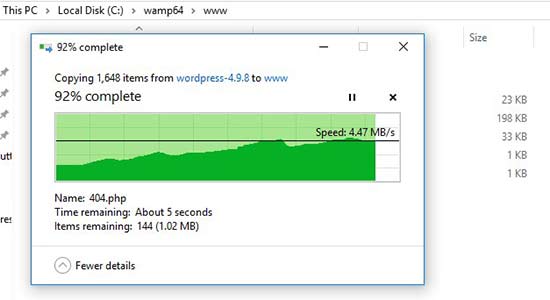
You can rename the ‘wordpress’ folder to anything you want, such as mysite, testsite, etc. This will be the URL of your local WordPress site, so be sure to choose something you’ll remember easily.
For the sake of this tutorial, we renamed the folder from wordpress to mysite.
Next, you can open the web browser and go to http://localhost/mysite/
First, it’ll ask you to select a language and then show you the database setup information. Once you have read it carefully, go ahead and click on the ‘Let’s go’ button to continue.
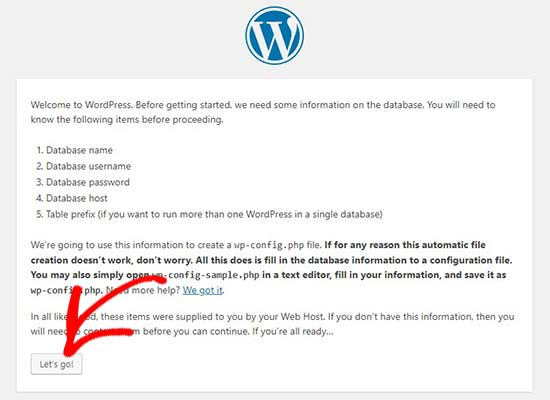
After that, you need to enter your database details like database name, username, password, host, and table prefix.
The database name will be the one that you entered in the previous step. In our case, we called it ‘test_db’. The username will be ‘root’, and you can leave the password field blank. You can also leave the database host and table prefix as-is.
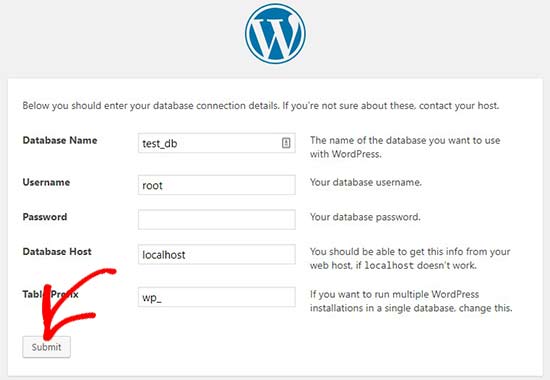
Next, click on the ‘Submit’ button and WordPress will create a configuration file for you in the backend.
On the next screen, you will see a success message stating that WordPress is connected to your database, and you can proceed with the installation.
Go ahead and click on the ‘Run the installation’ button to continue.

It will take you to the welcome screen for WordPress. You need to add a title for your new WordPress website, choose an admin username, enter a strong password, and provide an admin email address.
Once you’re ready, click on the ‘Install WordPress’ button.
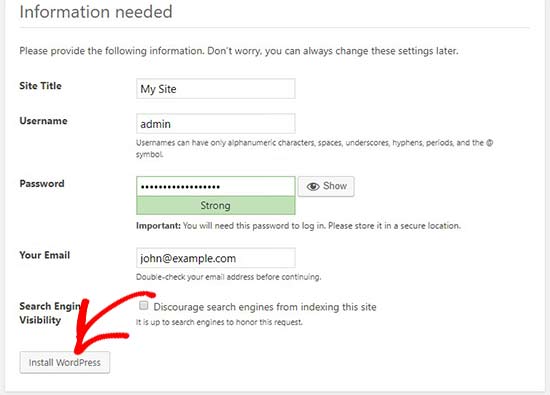
After the installation process is complete, you’ll see a success message. In the background, WordPress has created new tables in your database and it’s ready to use.
You can then proceed to your WordPress dashboard by clicking on the ‘Log In’ button.

Congratulations, you have successfully installed WordPress on a Windows computer using WAMP.
Step 4. Enabling Pretty Permalinks in WAMP
The new version of WordPress doesn’t break your local site on changing the permalinks setting.
However if you still see the ‘page not found’ error on your pages after changing the permalinks from Settings » Permalinks in WordPress, then simply follow our guide on how to enable custom permalinks in WAMP.
Step 5. Troubleshooting WAMP Issues
WAMP is quite easy to use even for beginners. However, if you are unable to get it running, then the following troubleshooting tips would help.
Fixing the WAMP Skype Conflict
If you have Skype installed and running, then WampServer may not be able to work properly due to a conflict with Skype. The conflict is caused by both Apache and Skype using the same port 80. There is a simple fix for this problem.
Open Skype and go to Tools » Options. This will bring up a dialog box, from here you need to click on Advanced and then Connections.

Uncheck the box that says Use port 80 and 443 as alternatives for incoming connections. Save options and restart Skype.
Install Visual C++ Redistributable
WAMP needs Visual C++ Redistributable for Visual Studio 2012 to run. If you don’t have it installed on your computer, then you can download and install it from the Microsoft website.
Bonus: Migrating from WAMP to Live
We’ve also written a separate guide on how to move WordPress from WAMP local server to a live site. Hopefully, you’ll find it helpful when you are ready to deploy your local site to production.
Having a local server environment is great for learning and testing purposes. But remember, if you want to start a WordPress blog for other people to see, then you do not need to install WordPress on your computer. You need to install WordPress on a WordPress hosting provider.
We hope this article helped you learn how to install WordPress on Windows using WAMP. You may also want to see our guide on 18 most important things you need to do after installing WordPress.
If you liked this article, then please subscribe to our YouTube Channel for WordPress video tutorials. You can also find us on Twitter and Facebook.
The post How to Install WordPress on your Windows Computer Using WAMP appeared first on WPBeginner.
from Tutorials – WPBeginner https://ift.tt/2Pnvnm1
More View at https://mwktutor.com
No comments:
Post a Comment